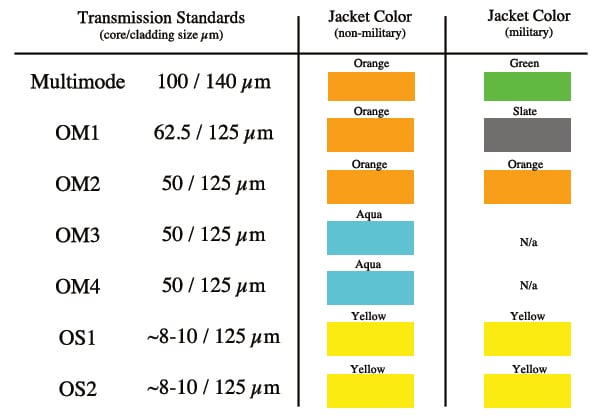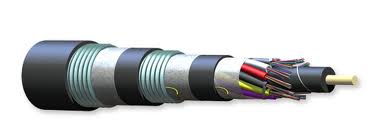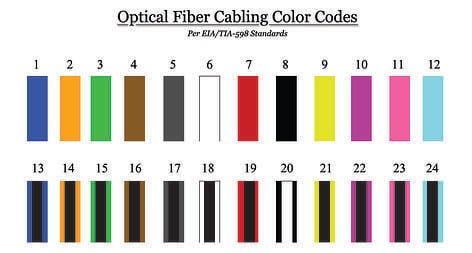Optical fiber comes in many forms, meant for different industries, applications and regulations. With an ever increasing variety to choose from, it can be tricky to figure out what exactly it is you need for your next project. Follow along below as we unravel the mysteries of optical fiber color coding.
Fiber Jacket Colors
Similar to the color coding designations of copper cabling, optical fiber has a color code designation for strands of fiber within the larger cable, as well as the cable's jacket. These color codes are set by the EIA/TIA-598 standards guide identification for fiber and fiber related units that determines which color codes are used in which applications. The colors don't only apply for the application though, they also are meant to be of use in determining a cables properties. The differences in colors are based upon different levels of OM and OS fiber (Optical Multimode & Optical Singlemode). It is important to note that different color codes may be used for the same type of cable depending on whether it is being installed in non-military or military facilities.

***The optical fiber coat colors for non-military applications are as follows: OM1-Orange, OM2-Orange, OM3-Aqua, OM4-Aqua, Multimode-Orange, OS1-Yellow, OS2-Yellow, PMOS-Blue
***The optical fiber coat colors for military applications that are defined are as follows: OM1-Slate, OM2-Orange, Multimode-Green, OS1-Yellow, OS2-Yellow
Inner Cable Organizational Color Coding
Optical fiber cable is separated into strands, which are the individual fibers within the larger piece of cabling. Up to 24 individual strands can be manufactured loosely, and after that point they are usually sectioned into tubes containing 12 each. Each tube containing 12 strands is then given a color.

As of the time of this posting, the largest Corning fiber cable is an LT cable of 432 strands. This is a massive cable with 36 tubes with 12 strands per each.

***The optical fiber color code from fiber number 1 to 12: blue, orange, green, brown, slate, white, red, black, yellow, violet, rose, aqua.
***The optical fiber color code from fiber number 13 to 24 go back through in the same order, only with the addition of a black tracer (except for the black colored cable, which has a white tracer.)
For more information about fiber cable or corning products, click here.


.png?width=58&height=58&name=X_logo_2023_(white).png)
